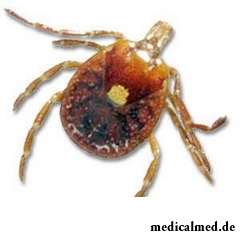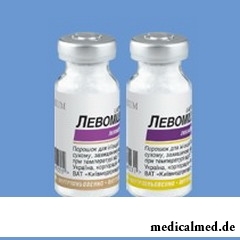





Typhinia
Typhinia – an acute infectious disease. Activators  of a typhinia are louses (an epidemic typhinia) or mites (a local typhinia). The disease with alternation of attacks of fever and the periods of remission proceeds.
of a typhinia are louses (an epidemic typhinia) or mites (a local typhinia). The disease with alternation of attacks of fever and the periods of remission proceeds.
It is possible to ache with a typhinia in all regions, except for Australia. The greatest probability to ache with typhus, and in its most severe forms – in Africa. So, in Sudan after World War I in ten years about 100 thousand people died of this disease.
The typhinia also is widespread in India, in the territory of Russia and in Balkan countries. The epidemic typhinia caused by acervate accommodation of people in insanitary conditions is more widespread in Iran, India, Southeast Asia. In the countries of Europe, Asia, Africa, South America a carrier of a typhinia are the louses of the sort Pediculus parasitizing on the person.
In the countries of Europe, Asia, Africa, North and Central America the tick-borne typhinia meets. A carrier of a typhinia are mites of the sort Ornithodorus.
What factors provoke a typhinia?
Sort Borrelia spirochetes belong to activators of a typhinia. The tick-borne typhinia is a zoonotic transmissible disease which activators are different types of borreliya: Century of caucasica, V. of latyschewii, V. of hispanica, V. of persica, V. duttonii.
In the biological, morphological properties these borreliya are similar to causative agents of epidemic typhus.
Typhinia carriers
Carriers of a tick-borne typhinia are ticks of the family Argas persicus, Argasidae who are reservoir owners of spirochetes. Besides, different types of rodents can be a tank of borreliya. Mites are infectious throughout the entire period of life (about 10 years). As a rule, infection of the person occurs owing to a sting of a tick. Most often it occurs in warm season during activation of life activity of mites.
Carriers of an epidemic typhinia are louses of P. humanus humanus (clothes), Pediculus humanus capitis (head) and Phtirius pubis (pubic). An epidemic typhinia only people can be ill.
Typhinia pathogeny
Borreliya at hit cells of lymphoid and macrophagic system where begin to breed are implemented into a human body and already in much bigger quantity come to blood. Under the influence of bactericidal properties of blood they begin to collapse partially with release of endotoxin which strikes the central nervous and circulatory system. Defeat of systems is followed by fever, and in a liver and a spleen there are necrosis centers. Borreliya, being late in capillaries of internals, break local blood supply owing to what the hemorrhagic heart attack develops.
The first period of a disease which is followed by fever comes to the end with development with an organism of antibodies to borreliya of the first generation. As a result the most part of borreliya perishes that is clinically expressed in approach of the period of remission. However a part of borreliya changes the antigenic properties and becomes steady against antibodies. They  start over again breeding, and at hit in blood cause a new attack of fever. The antibodies which are formed against the second generation of borreliya also destroy most of them, but not all. It provokes a disease recurrence again. The absolute recovery comes only in that case when in blood there is a full range of the antibodies destroying all mutations of barrels. Thus after recovery of durable immunity to this disease does not arise as antibodies remain in an organism short time.
start over again breeding, and at hit in blood cause a new attack of fever. The antibodies which are formed against the second generation of borreliya also destroy most of them, but not all. It provokes a disease recurrence again. The absolute recovery comes only in that case when in blood there is a full range of the antibodies destroying all mutations of barrels. Thus after recovery of durable immunity to this disease does not arise as antibodies remain in an organism short time.
Typhinia symptoms
The first attack of a typhinia begins suddenly. The patient feels a short-term fever which is replaced by temperature increase. There is a headache, muscle and joints pain, vomiting, nausea. Temperature quickly rises, skin becomes dry, pulse becomes frequent, there is a delirium. The peak of an attack is followed by emergence of an enanthesis, development of jaundice and increase in a liver and spleen. During fever pneumonia or bronchitis can develop, signs of damage of heart are noted. The first attack lasts 2-6 days. Then there comes the remission period, the health of the patient improves. But in several days the second attack of a disease having similar symptoms develops.
Several similar attacks which, as a rule, come to an end with an absolute recovery and approach of temporary immunity to a disease are characteristic of an epidemic typhinia. Of a tick-borne typhinia it is characteristic four and even more similar attacks which, however, have easier symptomatology and proceed less. But, sometimes, that the second attack proceeds much more hard, than the first.
The typhinia is fraught with development of complications: uveites, meningitis, synovites, rupture of a spleen, iridocyclites, irites.
Diagnosis of a typhinia
Diagnosis of a disease is based on the epidemiological data and clinical manifestations. The importance in diagnosis of a typhinia plays a research of peripheral blood. During an attack in blood of the patient it is quite easy to find the activator.
Treatment of a typhinia
Treatment of an epidemic typhinia consists in use of antibiotics (levomycetinum, penicillin, chlortetracyclin), and also arsenic drugs (Novarsenolum).
For treatment of a local typhinia use antibiotics of tetracycline group, ampicillin, levomycetinum.
Prevention of a typhinia
Prevention of a disease comes down to fight against activators. It is necessary to avoid contact with nitty patients. Now in our country and in some other countries epidemic typhus is quite rare disease.
Prevention of a local typhinia consists in protection of people against contact with mites, and also in extermination of rodents and other carriers in the natural centers.
Each person has not only unique fingerprints, but also language.

Household skills which to us so diligently imparted in the childhood it appears, not always bring only benefit. According to result...
Section: Articles about health
Urogenital candidiasis (milkwoman) – a fungal infection which annoys unpleasant feelings in the field of generative organs, being followed by white curdled allocations, an itch, discomfort during an urination, pain. She is called by Candida fungus – a mustache...
Section: Articles about health
Impossibility to conceive the child – a trouble of many Russian families. During quite long time was considered that main "culprits" of troubles such are women. Modern physicians claim that the situation is different: about a half of failures in attempts of reproduction are connected with male infertility....
Section: Articles about health
The brain of the person is studied not one hundred years, but the quantity of the riddles connected with this body increases rather, than reducing...
Section: Articles about health
Cystitis, or inflammation of a mucous membrane of a bladder, this very widespread disease which, owing to some features of a structure of bodies of urinogenital system, women have approximately four times more often than men. In the main risk group...
Section: Articles about health
Osteoporosis this general disease which main sign is decrease in density of a bone tissue. On distribution width it takes the fourth place among noninfectious diseases. The illness develops at mature age more often: in our country about a third of women and a quarter of men suffers from it 50 years are more senior....
Section: Articles about health
It is pleasant to state a possibility of improvement of quality of life of people with problems of functioning of secretory system. By efforts that...
Section: Articles about health
Physical activity is necessary for normal functioning of a human body. At a lack of the movement joints cease to function, muscles atrophy, cardiovascular activity is broken and the metabolism worsens. Modern городс...
Section: Articles about health
Scientists have no unambiguous opinion on a proximate cause of emergence of a carcinoma cutaneum today. Only the factors promoting development of this illness are precisely established. Treat them: long impact on skin of ultraviolet rays, radiation exposure, thermal injuries, injuries of skin by aggressive chemicals (pitches, acids, alkalis, etc.), genetic predisposition (existence of malignant new growths of skin in the family anamnesis), at...
Section: Articles about health
No, probably, the person who would not have cold. Cold, cough, a headache – these symptoms are known to everyone. Peak to Prost...
Section: Articles about health
For anybody not a secret that our country is one of the most "drinking" in the world. At clear understanding that the use of hard alcoholic drinks – occupation extremely harmful, most of Russians belong to alcoholism with unjustified loyalty. These...
Section: Articles about health
The stroke is one of the most widespread diseases of the person, annually in the world about 6 million cases of this pathology are registered. According to medical statistics, strokes occur almost three times more often than myocardial infarctions. The disease belongs to heavy, and has an unfavourable result: the lethality reaches 40% among women and 25% among men. A considerable part of the patients who endured a stroke cannot be recovered completely. We suggest readers to examine...
Section: Articles about health
Residents of big cities quite often have a disease which is known as the syndrome of chronic fatigue (SCF) today. This illness...
Section: Articles about health
The unpleasant feelings connected with spring breakdown are familiar almost to each of us. Often happens that in March-April on the person weakness leans: he suffers from drowsiness, complains of bad mood, loss of interest in life and failures in affairs....
Section: Articles about health
Some people consider what for medicine of the 21st century of secrets in the field of health of the person almost does not exist. It absolutely not so. The more answers scientists receive, the more the most difficult questions are raised for them by life. Besides, there are diseases which are not explained with science in any way of which existence people know for 100-150 years. These diseases meet not so often, but from some of them nobody is insured....
Section: Articles about health
All diseases from nerves – in this joke a big element of truth, are said by doctors. Constant stresses lead body to decrease in protective forces...
Section: Articles about health
The number of long-livers is very small. One person from 5 thousand lives up to age of 90 years, and the centenary boundary steps over only one of 20 thousand. However, doctors claim that each of us is quite able to affect own destiny. At the same time speech to Ida...
Section: Articles about health
Partial and the more so full loss of hearing significantly reduces quality of life. Difficulties with communication lead to loneliness and isolation. The person who badly hears experiences difficulties with social and professional implementation, quite often has problems in private life....
Section: Articles about health
According to World Health Organization, every third inhabitant of Earth has excess weight, and every tenth suffers ожирен...
Section: Articles about health
The kid who was recently born is surrounded with love of adult family members and their cares without which the baby cannot exist. Some parents consider that gentle attachment and caress are quite enough that the child correctly developed and was happy...
Section: Articles about health
The main role in development of a peptic ulcer of a stomach and duodenum the bacterium Helikobakter plays pilor. Activity and the strengthened reproduction of this microorganism lead to weakening of protection of mucous membranes and their erosive damage. Displays of an illness seriously reduce quality of life: patients regularly test attacks of severe pain, heartburn, nausea. On this background also psychoemotional malfunctions develop: a kidney-vetch, as a rule, shows an acrimony, ча...
Section: Articles about health
Coffee - the tonic loved by many for the invigorating aroma and deep taste. Having the stimulating effect, coffee raises ра...
Section: Articles about health
One of the useful properties presented to the person by the nature is ability to feel fear. This ability is designed to signal about approach of a dangerous situation and to help to avoid in advance it to keep life. However if the fear is persuasive and not about...
Section: Articles about health
With age in a human body harmful substances collect. We receive them with food and water, at inhalation of the contaminated air, reception of medicines, use of household chemicals and cosmetics. A considerable part of toxins accumulates in a liver which main function is continuous purification of blood. This body begins to knock as any got littered filter, and efficiency of its work decreases....
Section: Articles about health
Practically each person is familiar with the annoying, pulling, unscrewing pains caused by overcooling of muscles of a back. In некото...
Section: Articles about health
Not without reason doctors say that 90% of diseases begin or develop because of misoperation of intestines. Disturbance of its functions is connected with various factors among which the important place belongs to excessive "clutter" of an intestinal path. In an organism скаплив...
Section: Articles about health
For the time being the perspective of heart diseases seems to most of people remote and foggy. But sooner or later practically each adult faces extremely unpleasant feelings: sudden stethalgia. To be consoled at this time in a thought of what for a heart attack still early, will hardly turn out: if the person is impressionable, he, as a rule, has feeling of panic and fear of fast death. And meanwhile, it is very often possible to confuse pains with cardiac pains невралгическог...
Section: Articles about health
